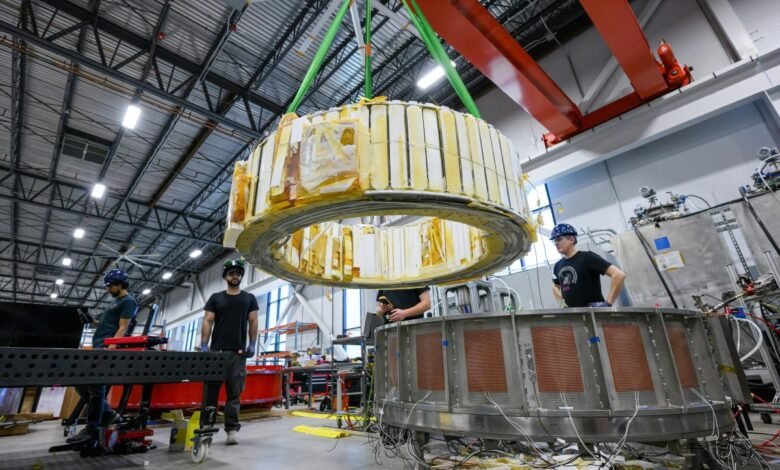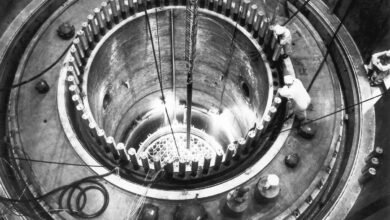Commonwealth Fusion Lands $1B+ Deal for Future Reactor

▼ Summary
– Commonwealth Fusion Systems has agreed to sell over $1 billion worth of power from its first commercial fusion reactor, Arc, to the Italian energy company Eni.
– The 400-megawatt Arc reactor will be built in Virginia and is expected to open in the early 2030s, with Google having already agreed to purchase half of its output.
– The company’s first demonstration reactor, Sparc, is 65% complete and on track to be turned on in 2026 to provide experience for building the larger Arc system.
– The power purchase agreements with Google and Eni are structured to be collaborative, acknowledging the challenges of first-of-a-kind technology without punitive measures for potential delays.
– The primary purpose of these agreements is to establish a price for fusion power and provide a financial package to attract further investment for building the Arc plant.
In a landmark move for the clean energy sector, Commonwealth Fusion Systems has secured a power purchase agreement valued at over one billion dollars with the Italian energy giant Eni. This deal covers electricity generated by CFS’s inaugural commercial-scale fusion reactor, known as Arc, which is slated for construction near Richmond, Virginia. The strategic location places the future plant in proximity to one of the nation’s most concentrated hubs of data centers. According to CEO Bob Mumgaard, the 400-megawatt facility is projected to commence operations in the early 2030s.
This arrangement with Eni represents the second major power offtake agreement for the company. Earlier this year, Google committed to purchasing half of the reactor’s output. Specific details regarding the exact volume of power covered by the Eni deal and its precise timeline have not been publicly disclosed by either party.
Progress on the company’s technology continues steadily. Mumgaard recently confirmed that the Sparc demonstration reactor in Devens, Massachusetts, is now 65 percent complete. This smaller-scale prototype remains on schedule to be activated in late 2026. The primary purpose of Sparc is to serve as a critical learning platform, providing invaluable experience in constructing a near-full-scale fusion system. Mumgaard emphasized that Arc will be the first in a series of plants supported by a supply chain specifically developed for mass production.
Commonwealth Fusion Systems is a prominent player in the fusion energy field, utilizing a tokamak-based design. This approach relies on powerful D-shaped superconducting magnets to contain and compress a superheated plasma, where atomic collisions release vast amounts of energy. The company maintains a policy of transparency with the scientific community, sharing progress and conducting extensive simulations to preemptively identify potential challenges.
A key objective for the Sparc reactor is to demonstrate a net energy gain, producing more power than it consumes to sustain the fusion reaction. However, definitive confirmation will only come after the reactor is fully operational. Achieving this milestone is expected to consume a substantial portion of the nearly $3 billion in funding the company has raised to date. A significant recent infusion came from an $863 million Series B2 round that attracted investment from notable backers including Nvidia, Google, Breakthrough Energy Ventures, and Eni itself.
Naturally, questions arise about the implications for these agreements should the project face delays or technical setbacks. Mumgaard described the contracts as carefully balanced, avoiding punitive measures while fostering a collaborative partnership. He noted that the involved companies fully recognize the inherent uncertainties of pioneering technology and are committed for the long term.
While Google plans to use its share of the power for its data centers, Eni’s situation is different. As an international oil and gas company with limited U.S. operations requiring such a large energy load, it will not consume the electricity directly. Lorenzo Fiorillo, Eni’s director of technology, R&D, and digital, clarified that the power will be fed into the general grid. In essence, Eni will act as a reseller.
Given that electricity from a first-of-its-kind fusion plant will carry a high cost, Eni is more likely to incur losses than profits from trading the power. The true value of the agreement appears to be strategic. It helps establish a benchmark price for fusion energy and, crucially, strengthens CFS’s position when seeking additional project financing. Mumgaard acknowledged this, stating that the power purchase agreement provides the certainty needed to approach financial investors and begin serious discussions about funding the actual construction of the Arc plant.
(Source: TechCrunch)
